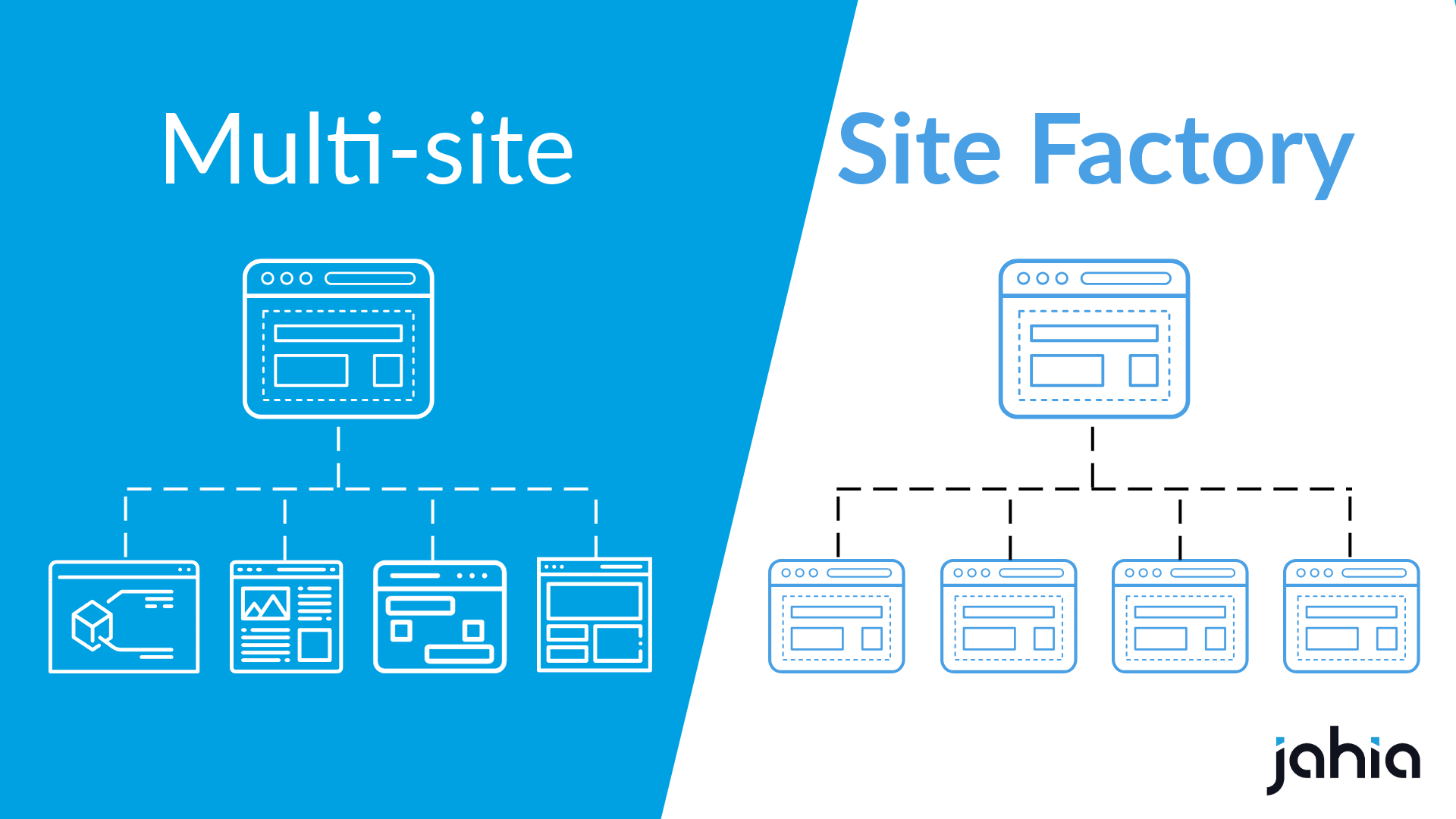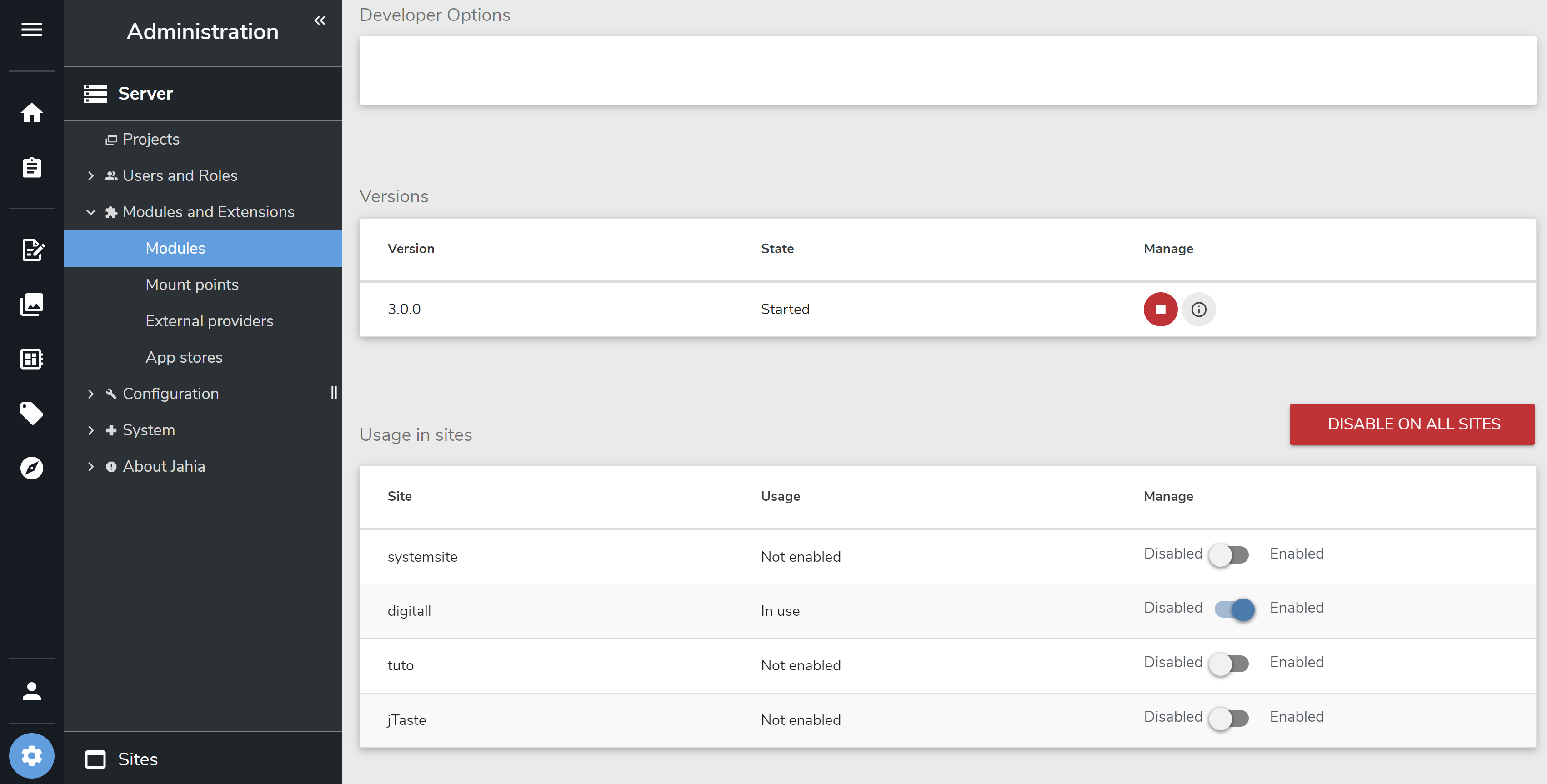5 steps to set up a site factory

Is your business evolving? Do you have new content management needs? Are you wondering how to deliver experiences that are consistent with your brand’s image as your communication channels multiply? The Site Factory may be the answer to your questions!
What is a site factory?
Website factories are advanced platforms designed to efficiently manage and deploy multiple websites across various brands or regions. By leveraging a layer of technology that supports multiple codebases, these platforms streamline the creation and maintenance of numerous sites under a unified system. This approach ensures consistent multisite governance and enables standard processes for building and scaling websites. This structure allows organizations to deliver cohesive and adaptable digital experiences efficiently across all their sites.
What is the difference between a multisite structure and a site factory ?
It is important to start by explaining the difference between a multi-site structure and a site factory, two concepts that are often confused. We talk about multi-sites when a content management platform (CMS) is able to manage a multitude of heterogeneous sites. These sites can be intranets, institutional sites or even event sites that all require a specific architecture. On the other hand, a site factory allows you to create a multitude of sites based on the same structure.
We can therefore define a website factory as the set of technical processes and methodologies allowing to design, produce and put online websites from a base of functionalities defined in advance.

Why create a site factory?
A site factory is very useful for large groups because it allows them to pool the development of the sites of their franchises or subsidiaries from the same infrastructure. The employees thus have access to a standardized base that allows them to deploy sites simply, quickly and at a lower cost according to their specific needs. This speed of deployment is due to the autonomy of users, who have the flexibility to establish their own content publishing strategies, and the ability to deploy sites easily, without the help of technical bodies.
Website factories are for instance widely used by large corporations to efficiently manage a vast number of websites under a single entity. Multinational companies like Unilever or L'Oréal, which own multiple brands, use this model to quickly create and deploy websites for each of their brands across different countries while maintaining overall consistency.
In the publishing sector, a group like Condé Nast might use a website factory to manage the various local editions of its magazines, such as Vogue or GQ, easily adapting content and specific modules for each market while keeping centralized governance.
Another example is international hotel chains like Marriott, which can deploy a website factory to manage the individual websites of their hotels. This allows each property to have its own site while using a unified structure and technology. This approach simplifies content management, maintenance, and adherence to brand standards.
Steps to implement a site factory
Before you start developing your site factory, you need to know what type of structure your company needs. Each site factory has different specificities and architecture, define yours by following these points of analysis:
1. Define specific user needs
The needs of the future users of your site factory depend on their technical skills and their content publishing frequency. For example, the marketing team of a large group will want a flexible structure, able to give them freedom and autonomy in the creation and layout of content, while the manager of a franchise will prefer a simple structure with predefined configurations that do not require high page structuring skills. Depending on these parameters, your teams of developers will then be able to build the technical base of your site factory according to the profile of future contributors.
2. Establish a contribution strategy
Based on the usage of your business teams, you will be able to define contribution roles and manage editing rights for your site factory. For occasional contributions with little page creation, limited access to the platform's editing capabilities will not be disruptive, and will ensure the security of your digital environment. But for a marketing team that frequently adds new content to its site, it will be necessary to define a contribution role adapted to the modification and publication of pages with more free editing rights.
3. Develop content presentation materials
Once your contribution roles are defined, your technical team will be able to set up ready-to-use presentation templates modeled on the structure of your main site. They can then be edited by your contributors according to their needs. Coming back to the notion of "editing rights", a marketing team needs a lot more templates and configuration possibilities than a franchise manager. A marketer will want to be able to change the location of modules, add modules, and save the new page configuration he has created, while the franchise manager will prefer a template that is framed and simple to edit.

4. Content management
To fill your page templates, you need content. Some of your sites will probably contain the same content. But instead of recreating it locally, it would be simpler to have a base able to host all the content of the group in a unified way to be able to reuse it endlessly.
These features could then be useful:
- Centralized multimedia sharing (use a source image on different pages/sites)
- Content blocks shared by all sites: allows to modify content at the global level
- Reuse of a module developed and deployed locally by everyone.

Interface to activate a module on different sites
5. Train your teams on your digital solution
It is important that your contributors stay engaged with your publishing tool and know how to create content easily. Even more so whith Digital experience websites. Providing documentation and tutorials based on your teams' roles is important. If this is not done, they will turn to other tools due to lack of skills, which will take you away from your content centralization strategy and the very principle of creating your site factory.
The Cloud Site Factory option
Whether it's to improve the security of your network of websites, or to relieve the IT department of time-consuming site factory management, the cloud is becoming an increasingly popular option for organizations.
Indeed, cloud hosting management (with Jahia Cloud at least) simplifies site factories management, whether at the launch of each new site or during their operation (maintenance, monitoring, upgrades...). It takes the IT department just a few clicks to bring a new website online, whether in production or in an iso development environment, and to create the associated accounts with the right permissions.
What's more, many monitoring, surveillance and security tasks are either automated or managed by Jahia Cloud teams, as an integral part of the service provided. In Jahia Cloud, all data from all sites is tracked in a single cloud management console, within the Datadog tool.
Jahia Solutions
Jahia is a flexible and extensible solution that allows you to create a site factory adapted to your company's structure and scalable as it evolves. Reuse and share content limitlessley with Jahia's platform !
If you want to learn more about this topic, request a demo today !


